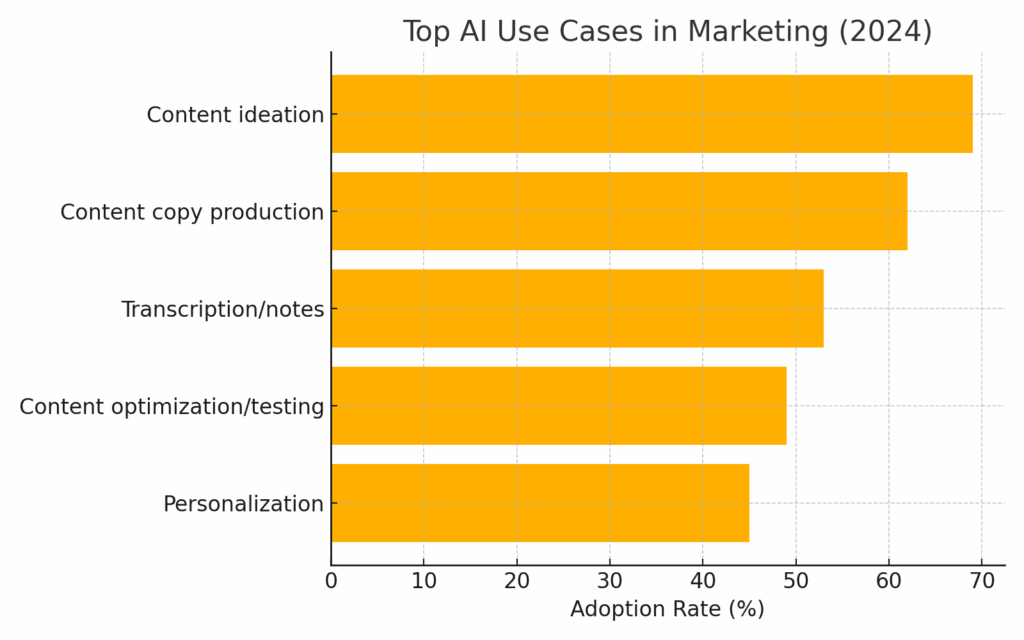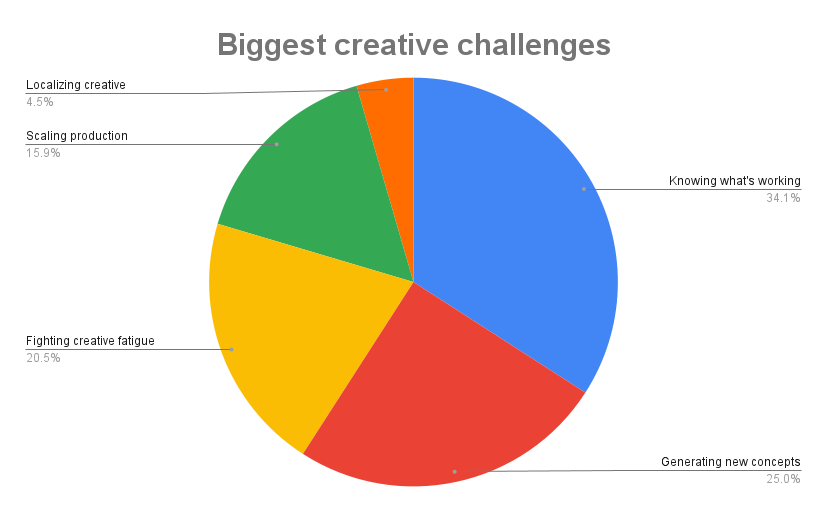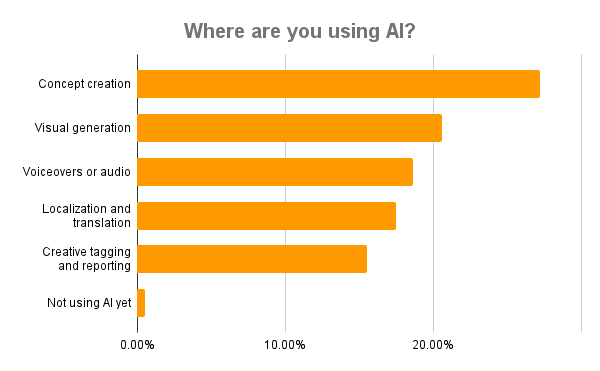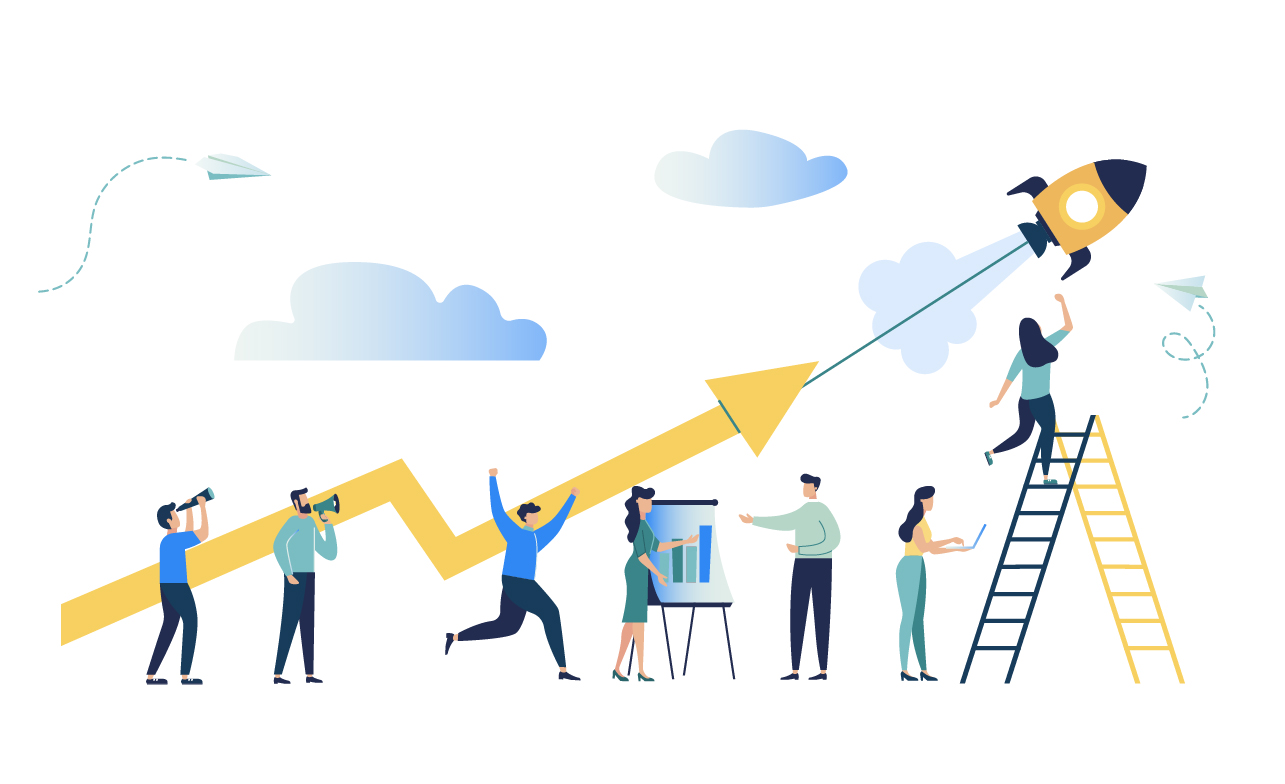Content
Stay up to date on the latest happenings in digital marketing
Summary
-
Embrace AI as a Core Strategy: With the launch of over 3,000 AI-native tools last year, marketers must integrate AI into their operations for content ideation, personalization, and campaign analysis to enhance efficiency and effectiveness. Investment in AI-driven solutions will be crucial for staying competitive in the rapidly evolving landscape.
-
Focus on Unified Data Infrastructure: Marketers need to prioritize building a composable and unified data infrastructure to streamline analytics and attribution processes. This includes leveraging tools that support integration from multiple data sources for better decision-making and insights.
-
Leverage Instant AI Insights for Campaign Optimization: Implement AI-powered analytics tools that offer real-time insights and automated recommendations. This will allow marketing teams to quickly adapt campaigns based on data-driven findings, ultimately improving campaign performance and reducing the time spent on manual data analysis.
When you look at the state of modern marketing analytics in 2025, you need to take a few deep breaths. It’s growing massively — as usual — but where it’s growing is most impressive: AI, AI, AI. But the big question is: what do marketers need most?
The answer just might be: even more AI.
Key Takeaways
-
Massive martech growth: 14,108 tools in 2025, up 9,304% since 2011
-
AI dominates marketing analytics: 3,068 new AI-native tools launched last year alone
-
Top AI use cases in marketing: Content ideation, personalization, creative testing, and campaign analysis
-
Marketers’ biggest needs: Unified data infrastructure, AI-enhanced attribution, and automated insights
-
Rise of AI agents: Custom-built tools helping marketers create, analyze, and optimize faster
-
Performance marketing leads AI adoption: Majority of UA pros already using AI daily
-
Singular’s innovations: Creative IQ and “Talk to Your Data” unlock instant, AI-powered analytics
-
The golden age of measurement: Rich, multi-source data + AI = deeper, more accurate attribution
Let’s dig in
Some of the big numbers defining the marketing analytics landscape, right off the bat:
- 14,108: total number of martech tools now
- 27.8%: growth rate last year (!!!)
- 9,304%: growth since 2011
- 3,068: number of AI-native martech products introduced last year
I am a big fan of Scott Brinker and his amazing, awesome, even frightening marketing technology landscape. Starting out in 2011 with just 150 logos, his martech landscape has grown massively.
Here’s the current state in 2025, with the data, marketing analytics, and attribution section highlighted by moi:

The current AI focus is no accident. It’s a trend caused by the collision of 3 main drivers:
- The super-rapid progress of AI since ChatGPT launched in late 2022
- The massive challenges marketers have in making sense of gigabytes of data
- The ever-increasing workloads we’re all under
What that means is that trend is not slowing down. In fact, Brinker says both that AI is over-hyped (sure) and massively disruptive (absolutely). And, like many technologies, we’re tending to overestimate the short-term impact while at the same time underestimating its long-term impact.
That hype — and that disruption — is something that Singular is making a massive contribution to. We just recently released several significant AI-powered tools, and there’s much more coming soon:
- Creative IQ: AI-powered creative optimization
- Talk to your data: LLMs for marketing analytics
So what is the state of marketing analytics in 2025? And what do marketers need most?
Marketing analytics landscape 2025
Martech and marketing analytics have both grown massively and astonishingly over the past decade.
Shockingly fast to shockingly large numbers, in fact. If we just look at Brinker’s martech landscape, we see a 9,304% increase in martech companies from 2011 to 2024 and beyond:

Importantly, 77% of the new tools introduced last year in 2024 were AI-focused: 3,068 new products for the marketing tech ecosystem that were AI-native.
If the current trends continue, we’ll see something like 17,000 total martech tools by the end of 2025, and perhaps another 3,500 AI-native tools built or released just this year alone. (Of course, with numbers like these, we’re going to see some consolidation, and some — maybe most — will fail.)
Where marketers are using AI in marketing analytics solutions
Right now, we’re mostly seeing the wider marketing community use AI for content-related needs, and many of the solutions are in that space:
- 69%: Content ideation
- 62%: Copy production
- 53%: Transcription, notes, summaries
- 49%: Content optimization and testing
- 45%: Personalization

I’d argue that the user acquisition and performance marketing slices of marketing professionals are probably more advanced in their AI use than the average marketer.
When we recently asked user acquisition pros about their biggest challenges in terms of creative, 34% were having challenges just knowing what’s working. A fifth were fighting creative fatigue, and maybe losing. Another quarter needed help generating new creative ideas.

AI can help with all of that.
Then, when we asked the same user acquisition experts about their use of AI, the results tracked to the problems:

27.2% are using AI for concept creation. 20.6% are doing visual generation via AI. Only .5% of these high-performance marketers were not using AI at all …
But even this use of AI is quickly expanding to much more challenging projects and processes. Every day, marketing experts have to set up campaigns, create tracking links, manage marketing data flows, set up attribution, understand analytics, and summarize campaign results. Look to Singular for help with all of it, very soon.
And these high-level users are expanding even more to AI agents. Some of them are for building creative (I’ve made one of those myself). Others are tackling key parts of our workloads, plus eventually AI agents building custom software for very specific needs and uses.
The modern martech landscape in 2025 is all about solving these problems with smart systems.
What marketers need most in 2025 from martech, attribution, and analytics solutions
What does this mean about what marketers need now from attribution and analytics solutions like Singular?
5 things in particular come to mind:
- Unified and composable data infrastructure
Marketers need a unified data layer, whether via cloud data warehouses or data lakes, or, for simpler solutions, your data in Singular. They also need a composable data infrastructure: modular, flexible, scalable, and accessible for AI and other analytics. That includes Singular’s Marketing ETL solution, to get your marketing data just the way you want it, or our brand-new, super-modern ELT platform, Extract, which is perfect for unifying the 20 different data sources you likely have. (Learn more about Extract here.) - AI-enhanced attribution and measurement
Attribution and marketing measurement are complicated. You need Unified Measurement attribution models blending all the available data, including probabilistic, SKAN, first-party data, extra data from Meta (AMM)and Google (ICM) that you can only get via an MMP. You also need modeled cross-channel conversions, with the ability to access incrementality and media mix modeling (MMM) capabilities. - Instant AI-powered insights and recommendation
And you need AI, like our Claude (and other LLMs) integration for near-real-time insights and automated causal analysis. Natural language interfaces for querying marketing performance are huge for easy non-technical access to data, and sometimes you learn something or uncover some insight that you never would have thought to search for in a dashboard. - Scalable content and personalization management
Marketers also need GenAI-driven creative production and testing, maybe extending to brand-specific LLMs for on-brand AI-generated content, and likely, eventually, dynamic personalization engines leveraging integrated data and content intelligence. - AI-driven SaaS services
Marketers increasingly need external AI-powered services for things like attribution, analytics, and marketing operations. You can’t build everything in-house while also running your business, and this frees teams to focus on product, marketing, and strategy while benefiting from AI-driven operational efficiency.
The goal is freeing marketers and UA experts from grunt work and giving them the tools to have almost instant rich data and deep insights which enable super-fast campaign creation, execution, and optimization.
Yeah, this is part of the golden age of marketing measurement
I recently chatted with Singular CTO Eran Friedman on marketing analytics and the emerging “golden age of marketing measurement.”
Check out the convo here:
Briefly, what we’re seeing is more data from the big platforms like Meta, Google, TikTok, Snap, and more. We’re seeing more on-device data. And we’re building an increased ability to assimilate that data, enrich that data, and analyze that data in automated, quick, AI-driven ways.
That’s a golden age, in which the multiverse of analytics data from different angles and sources provides what might actually be better attribution and analytics results than the comparatively “perfect” tracking enabled by IDFA in the past and even GAID right now.
Why?
Because every buying decision, every install, every IAP purchase, every subscription converted is the result of a complex series of motivations and drivers, 1 of which is probably the last-clicked ad someone saw, but many of which might be hidden or non-digital. So getting more data from more sources shows more causality, including views, clicks, and other actions.
Singular can help
As a leading marketing analytics platform, we deliver new AI-driven and AI-enhancing solutions regularly. Talk to us to learn how you can get your data where it needs to go, and how to get the insights you need at the speed you want them.



